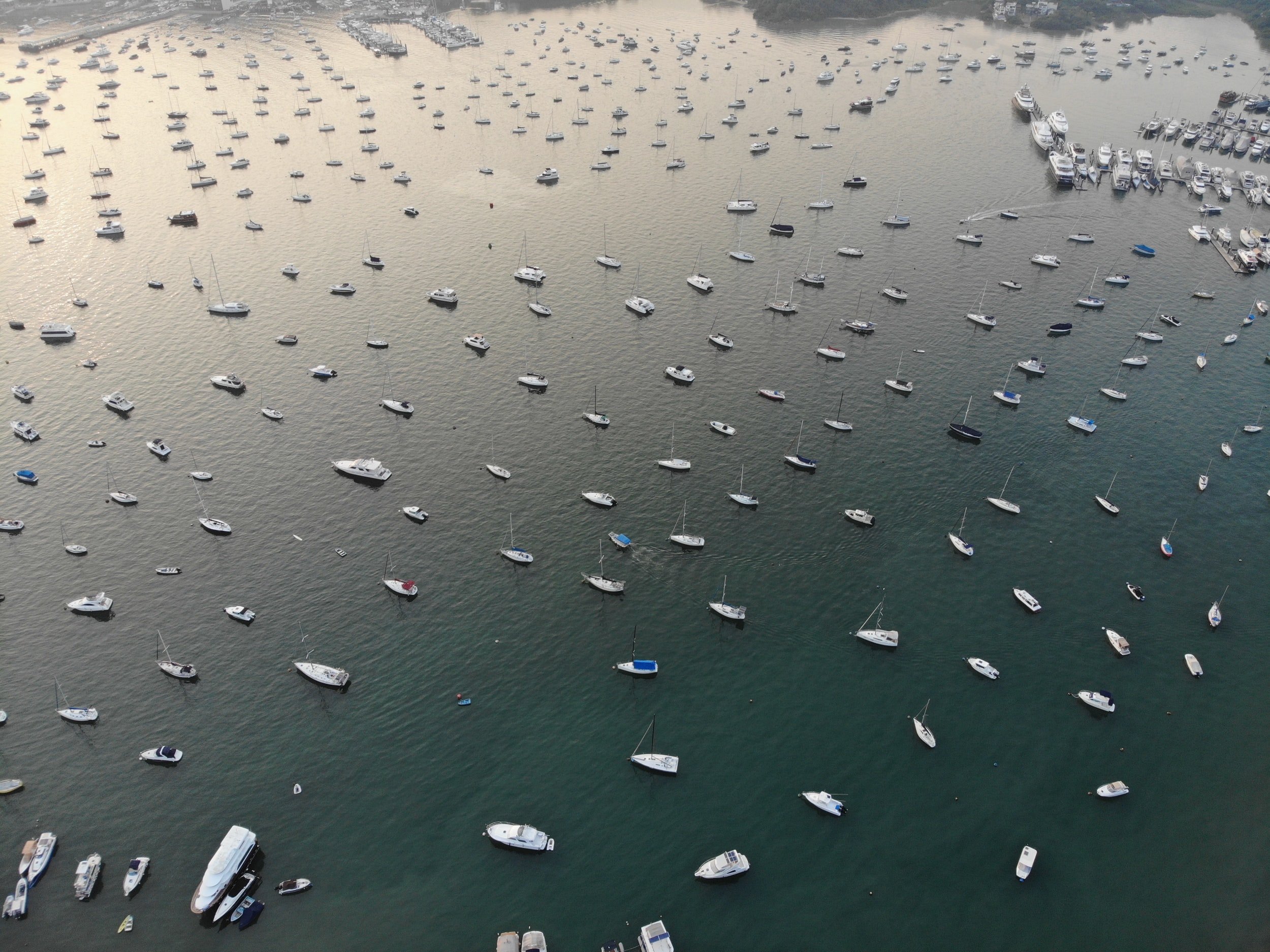
Mooring Maintenance
-

Mooring Systems
Mooring systems, in their simplest form, consist of a buoy, light chain assembly, a heavier anchor chain assembly and an anchor. The components of moorings are often difficult to access and in less-than-ideal conditions, so it is important that only experienced diving personnel with professional equipment be tasked with cleaning and inspecting mooring systems.
Mooring Buoy
Buoys are typically made of fiberglass, plastic or metal. They should have twice the flotation power as the weight of the suspended portion of the chain assemblies.
Chain Assemblies
The primary chain, or anchor chain, should be 1 ½ times the maximum water depth. The anchor chain assembly can consist of multiple legs of chain, each leading to a separate anchor. The secondary chain, or riser, is usually ½ the diameter of the ground chain and is equal in length to the maximum water depth. The chain assembly contains a lot of hardware and moving parts such as swivels, shackles and ground rings, all which can be susceptible to corrosion.
Anchors
Mooring systems are rated based on their holding power. Anchor choice and bottom composition are the two main factors that impact the holding power. There’s a wide range of anchors used in moorings including dead-weight anchors, drag-embedment anchors, pile anchors and direct-embedment anchors. Each type of anchor has its own benefits and limitations. The anchors that have the greatest holding power require hydraulics to install.The key to the success of any mooring system is maintenance. The frequency of regular maintenance will depend on the use of the mooring system.
-
Mooring Cleaning and Inspection
All accessible portions of a mooring should be cleaned and inspected at least on an annual basis or prior to entering service. Moorings that are in regular service (i.e., municipal mooring fields) have a different recommended maintenance schedule.
Uniform Corrosion vs. Fretting Corrosion
At first, when a mooring is installed, the chain links corrode at the same rate. That uniform rate of deterioration can be measured by checking the diameter of the chain throughout the chain assembly. Fretting corrosion is far more damaging and is found in the grip area (the crossing of adjoining links or hardware.) It occurs most often where chain links or hardware grind away at each other while under load, causing greater loss of link diameter. Regular inspections can catch any loss of chain link diameter and prevent mooring failure.Our divers will measure for possible stretching in the chain assembly and loss of chain diameter. They will assess the system’s overall alignment, check the chain and hardware for corrosion, cracking or other damage and inspect the buoy and its hardware. A full report will be issued after each inspection.
After our dive team has an initial baseline inspection report on the mooring, changes can be assessed and monitored during the annual inspection and cleaning.
Hurricanes and Boat Collisions
Moorings should be inspected immediately following any major event like a major storm, extreme high tides, or a boat collision. Inexperienced boaters running over moorings are responsible for the majority of repairs to moorings in Florida.Additional Recommendations
It is also recommended that the ground tackle of the mooring should be disconnected from the anchor every two years and hauled to surface for a thorough cleaning and inspection. -

Commercial Mooring Maintenance
For moorings that are used on a regular basis, the following service schedule is recommended:
Monthly
• Inspect all buoys and pick-up lines
• Clean growth off of pick-up line or replace
• Clean buoy and check for cracking
• Inspect and clean buoy through-line and hardwareQuarterly
• Inspect chain assembly, shackles and any protective hosing for wear and damage
• Inspect anchor, contact area between anchor and shackles. Look for signs of anchor movementBi-Annual
• Replace buoy through line and pick-up lineAnnual
• Clean and conduct full underwater inspection of mooring system
• Replace shackle pinsEvery Two Years
• Haul to surface for pressure washing and topside visual inspection
• Replace components of mooring assembly as neededEvery mooring field, no matter the size, should have a budget for regular maintenance, inspection and repairs. The integrity of the mooring system is dependent on it.
Something as simple as a pick-up line that is fouled with marine growth can lead to a potential mooring customer deciding to dock elsewhere or anchor.
Our dive team can assist management in the development of a maintenance plan that fits the budget for any size mooring field.
